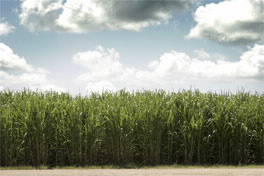FOR IMMEDIATE RELEASE | A PressPac Instant Replay*
ACS News Service Weekly PressPac: April 03, 2013
Advance in re-engineering photosynthesis to make drugs, compounds or ingredients
“Redirecting Photosynthetic Reducing Power towards Bioactive Natural Product Synthesis”
ACS Synthetic Biology
Scientists are reporting an advance in re-engineering photosynthesis to transform plants into bio-factories that manufacture high-value ingredients for medicines, fabrics, fuels and other products. They report on the research in the journal ACS Synthetic Biology.
Poul Erik Jensen and colleagues explain that photosynthesis does more than transform carbon dioxide and water into sugar and oxygen and generate energy. That process also produces a wealth of natural chemical compounds, many of which have potential uses in medicines and other commercial products. However, evolution has compartmentalized those functions into two separate areas of plant cells. Chloroplasts, the packets of chlorophyll that make plants green, generate energy and produce sugar and oxygen. Another structure, the endoplasmic reticulum, produces a wide range of natural chemicals.
Their report describes breaking that evolutionary compartmentalization by relocating an entire metabolic pathway needed for production of natural bioactive chemicals to the chloroplast. “This opens the avenue for light-driven synthesis of a vast array of other natural chemicals in the chloroplast,” they say, citing key natural chemicals that would be ingredients in medications.
The authors acknowledge funding from the Villum Fonden and the Danish Agency for Science, Technology and Innovation.
![]()
Contact
Science Inquiries: Michael Woods, Editor, 202-872-6293
General Inquiries: Michael Bernstein, 202-872-6042

green have been re-engineered in an advance
toward transforming plants into bio-factories
that make ingredients for medicines,
fabrics and fuels.

